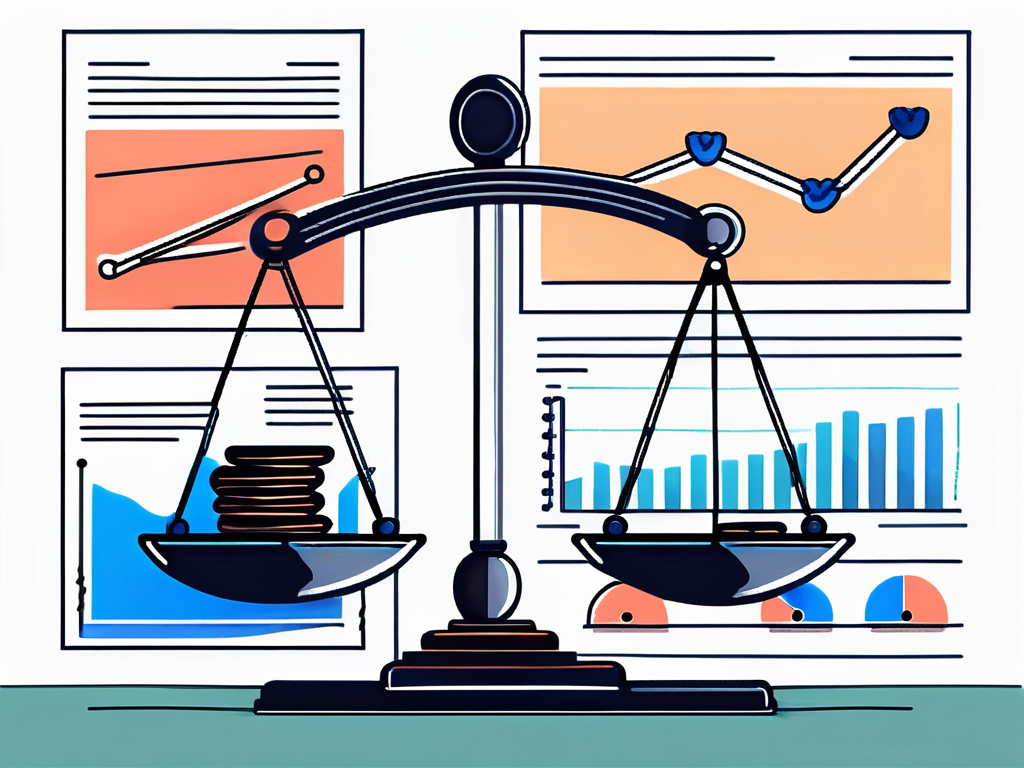Welcome, brave business owner, to the wild and wacky world of Profit and Loss Statements, or as we accountants like to call them, P&Ls. If you’ve ever wondered what all those numbers mean, or if you’ve ever been kept awake at night by the haunting question “What on earth is a P&L?”, then you’ve come to the right place. Buckle up, because we’re about to embark on a thrilling journey through the land of debits, credits, and everything in between.
Now, before we dive in, let’s get one thing straight. A P&L is not some mystical, arcane document that only the chosen few can understand. No, it’s a simple, straightforward report that tells you how your business is doing. Think of it as a report card for your business. And just like a report card, it can either make you jump for joy or cry into your pillow. But fear not! With this guide, you’ll be able to understand your P&L like a pro, and maybe even crack a smile or two along the way.
What is a Profit and Loss Statement?
A Profit and Loss Statement, or P&L, is a financial statement that summarizes the revenues, costs, and expenses incurred during a specific period of time. This could be a month, a quarter, or a year. It’s like a snapshot of your business’s financial health at a particular moment in time. If your business was a movie, the P&L would be the trailer. It gives you a quick overview, but it doesn’t tell the whole story.
Now, you might be thinking, “That sounds great, but what’s with all the jargon?” Well, dear reader, that’s where the fun begins. You see, accountants have a language all their own. It’s a bit like Klingon, but with more numbers. But don’t worry, by the end of this guide, you’ll be speaking accountant-ese like a native.
Revenues, Costs, and Expenses, Oh My!
Let’s start with the basics. Revenues, costs, and expenses are the three main components of a P&L. Revenues are the money you make from selling your products or services. It’s the cash that’s flowing into your business. Think of it as the lifeblood of your business. Without it, your business would be as lifeless as a vampire in sunlight.
Costs and expenses, on the other hand, are the money that’s flowing out of your business. These are things like rent, salaries, and the cost of goods sold. It’s the money you need to spend to keep your business running. Think of it as the fuel for your business. Without it, your business would be as motionless as a car without gas.
The Bottom Line
The bottom line is the net income, which is the final figure on the P&L. It’s calculated by subtracting the total costs and expenses from the total revenues. If the result is positive, congratulations! Your business is making a profit. If the result is negative, well, let’s just say it’s time to roll up your sleeves and get to work.
But remember, the bottom line is just one piece of the puzzle. It’s important, yes, but it doesn’t tell the whole story. To get a complete picture of your business’s financial health, you need to look at the entire P&L, not just the bottom line.
Reading a Profit and Loss Statement
Reading a P&L is a bit like reading a map. At first, it might seem confusing and overwhelming, but once you know what to look for, it becomes a lot easier. The key is to understand the different sections and what they represent.

The first section is the revenue section. This is where you’ll find the total revenues for the period. It’s usually the first line on the P&L, and it’s often the biggest number. But don’t get too excited. Remember, revenues are just one part of the equation. You also need to consider the costs and expenses.
The Cost of Goods Sold (COGS)
The next section is the cost of goods sold, or COGS. This is the cost of producing the goods or services that you sell. It includes things like raw materials, labor, and overhead. It’s the money you need to spend to make money. Think of it as the cost of doing business.
The COGS is subtracted from the total revenues to give the gross profit. This is the money left over after you’ve paid for the cost of producing your goods or services. It’s a good indicator of how efficiently your business is operating. The higher the gross profit, the better.
Operating Expenses
The next section is the operating expenses. These are the costs associated with running your business, but not directly tied to producing your goods or services. They include things like rent, utilities, and salaries. They’re the costs you’d have to pay even if you didn’t sell a single product or service.
The operating expenses are subtracted from the gross profit to give the operating profit. This is the money left over after you’ve paid for all your business expenses. It’s a good indicator of how well your business is doing overall. The higher the operating profit, the better.
Understanding the Profit and Loss Statement
Now that we’ve covered the basics, it’s time to delve a little deeper. Understanding the P&L is not just about knowing what the numbers mean. It’s also about understanding what they can tell you about your business.
For example, a high gross profit might indicate that your business is efficient at producing its goods or services. But if your operating expenses are also high, it could mean that your business is not as profitable as it could be. Similarly, a low gross profit might indicate that your business is not efficient at producing its goods or services. But if your operating expenses are low, it could mean that your business is still profitable.
Profit Margins
One of the most important things to look at on a P&L is the profit margins. These are the percentages that tell you how much of each dollar of revenue is profit. There are three main types of profit margins: gross profit margin, operating profit margin, and net profit margin.
The gross profit margin is calculated by dividing the gross profit by the total revenues. It tells you how much of each dollar of revenue is left over after paying for the cost of goods sold. The operating profit margin is calculated by dividing the operating profit by the total revenues. It tells you how much of each dollar of revenue is left over after paying for all business expenses. The net profit margin is calculated by dividing the net income by the total revenues. It tells you how much of each dollar of revenue is profit.
Financial Ratios
Another important thing to look at on a P&L is the financial ratios. These are numbers that tell you how well your business is doing in certain areas. There are many different types of financial ratios, but some of the most common ones are the current ratio, the quick ratio, and the debt-to-equity ratio.
The current ratio is calculated by dividing the current assets by the current liabilities. It tells you how well your business can meet its short-term obligations. The quick ratio is similar to the current ratio, but it excludes inventory from the current assets. It gives you a more conservative estimate of your business’s liquidity. The debt-to-equity ratio is calculated by dividing the total debt by the total equity. It tells you how much debt your business is using to finance its assets.
Using the Profit and Loss Statement
So, you’ve read your P&L, you’ve understood your P&L, now what? Well, now it’s time to use your P&L. You see, a P&L is not just a report. It’s a tool. It’s a powerful weapon in your business arsenal that can help you make informed decisions and plan for the future.
For example, you can use your P&L to identify trends in your business. Are your revenues increasing or decreasing? Are your costs going up or down? Are your profit margins improving or deteriorating? By analyzing these trends, you can gain valuable insights into your business and take action to improve your performance.
Budgeting and Forecasting
One of the most common uses of a P&L is for budgeting and forecasting. By comparing your actual results with your budgeted results, you can identify any variances and adjust your budget accordingly. Similarly, by analyzing your past performance, you can make more accurate forecasts for the future.
For example, if your revenues are consistently higher than your budgeted revenues, you might want to increase your revenue forecast for the next period. Similarly, if your costs are consistently lower than your budgeted costs, you might want to decrease your cost forecast for the next period.
Performance Measurement
Another common use of a P&L is for performance measurement. By comparing your actual results with your targets, you can measure your performance and identify any areas for improvement. This can help you set more realistic targets for the future and motivate your team to achieve them.
For example, if your net profit margin is lower than your target net profit margin, you might want to focus on reducing your costs or increasing your prices. Similarly, if your current ratio is lower than your target current ratio, you might want to focus on improving your liquidity.
Conclusion
And there you have it, folks! The Profit and Loss Statement, demystified. Who knew accounting could be so entertaining? We’ve laughed, we’ve cried, we’ve learned a thing or two about P&Ls. But most importantly, we’ve taken a big step towards understanding our business’s financial health. And that, dear reader, is no laughing matter.
So, the next time you’re faced with a P&L, don’t panic. Don’t run away. Embrace it. Read it. Understand it. Use it. And remember, in the world of business, knowledge is power. And with this guide, you’ve got the power to understand your P&L like a pro. So go forth, brave business owner, and conquer the world of finance. We believe in you!

